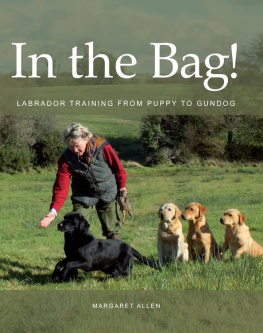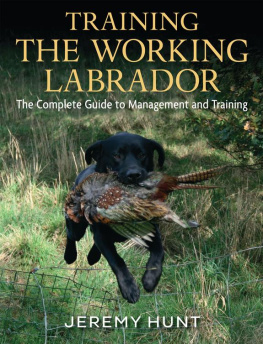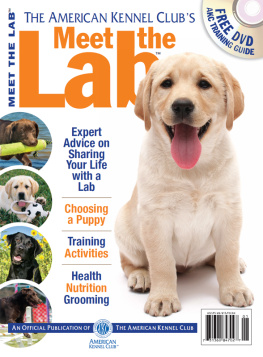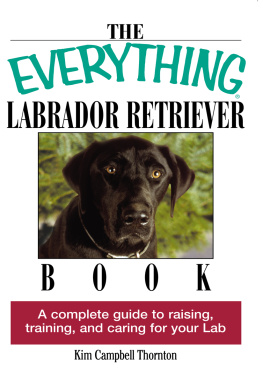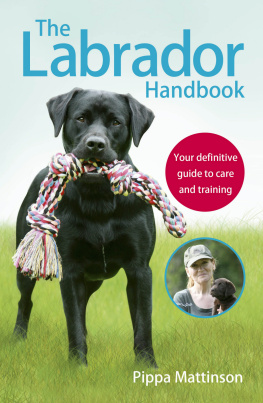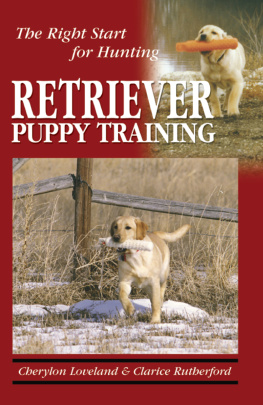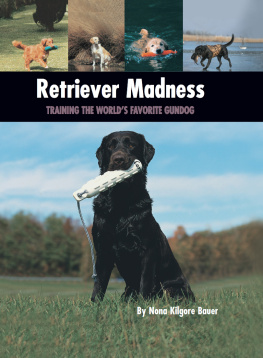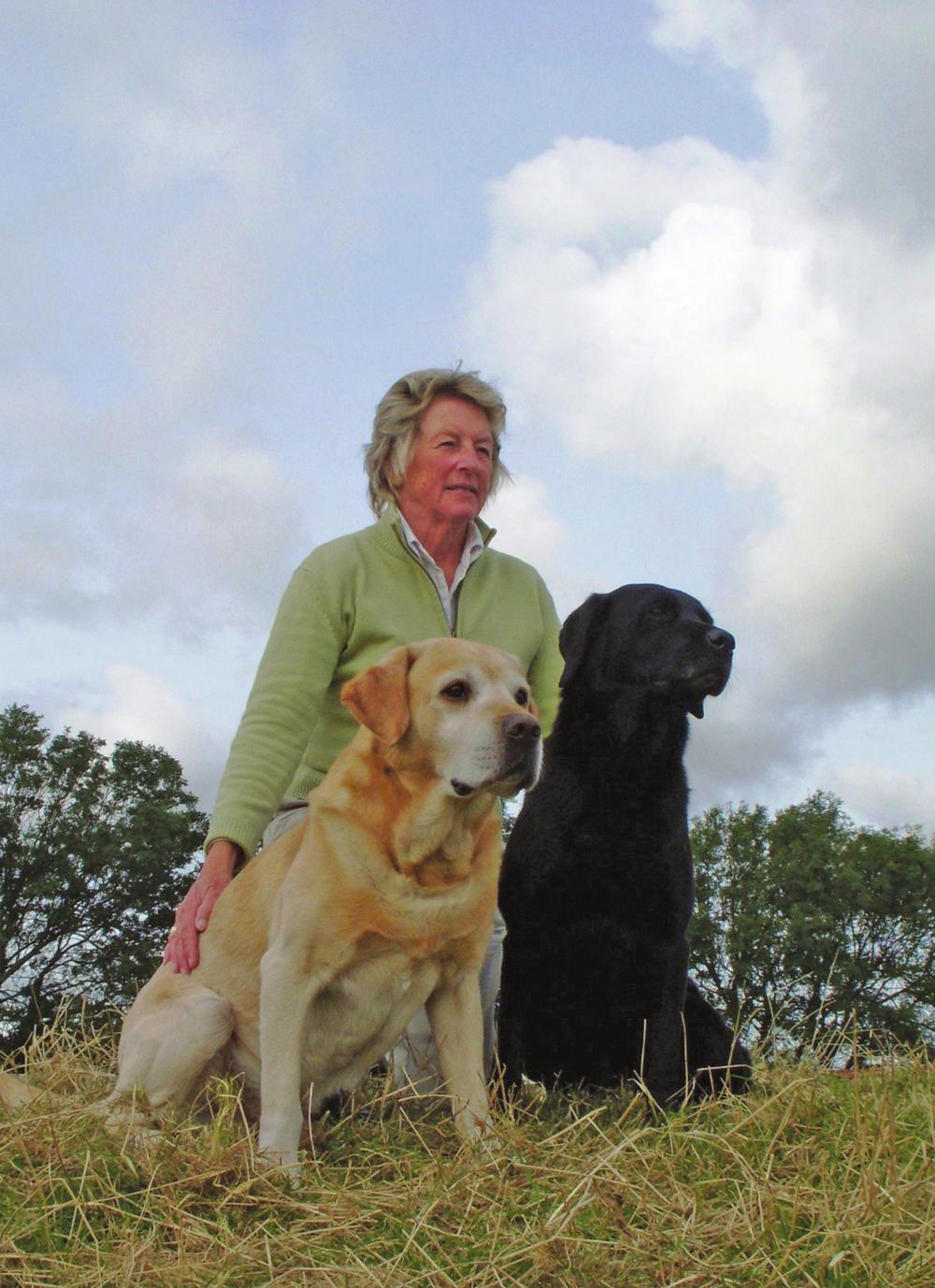First published in 2013 by
The Crowood Press Ltd
Ramsbury, Marlborough
Wiltshire SN8 2HR
www.crowood.com
This e-book first published in 2013
Margaret Allen 2013
All rights reserved. No part of this publication may be reproduced or transmitted in any form or by any means, electronic or mechanical, including photocopy, recording, or any information storage and retrieval system, without permission in writing from the publishers.
British Library Cataloguing-in-Publication Data
A catalogue record for this book is available from the British Library.
ISBN 978 1 84797 572 0
Acknowledgements
I am sincerely indebted to the many people I have met over the years who have taught me so much about dogs and how they think. I would especially like to thank the following people: John Brentnall, MRCVS, and Terence Girling, MRCVS, for vetting the veterinary bits of this book; Tony Jackson and Sue Orr for their encouragement and proof reading; Paul Quagliana, Hubert Watlington and Sophie Ross Gordon for photographs; Andy Hodder and his crew for their patience and help with photocopying; and Jenny Barber, Shirley Wood, Cheryl Wheeler and Ross Morland, who have helped in so many ways to enable me to get on with writing this book. Above all, I am so very grateful to my family, friends and the many Labradors who were the inspiration for me to start and complete this book.
The art of preparing a gundog for successful work in the field is a skill that requires in the trainer a subtle understanding of animal psychology, combined with the practical application of carefully considered training methods. So often for the amateur or the first-time owner of a young dog hopefully being trained for the shooting field, problems arise due in part to a failure to understand the mentality of the animal or, as is so often the case, an understandable but flawed desire to impose lessons well in advance of the dogs still juvenile comprehension.
Margaret Allen, whom I have known for many years, is one of that select group of gundog trainers who, having studied the behaviour and mental processes of gundogs, has applied training methods that are based on an understanding of just what it is that makes a dog tick. In the far distant past dogs, whatever their breed or purpose, were trained by breaking, involving methods that were harsh and today would be considered cruel. However, in the post-war era a new method of training was developed by the late Peter Moxon, a pioneer in the field of dog psychology and understanding, and this has been developed and adopted by subsequent successful trainers.
Many of Margarets dogs have won in field trials, working tests and in the show ring, and she and her team of Labradors are greatly in demand for picking-up at local shoots each season. Furthermore, as well as running a successful kennel business, she organizes popular training classes, both for beginners and for more experienced owners.
In this, her first book, Margaret has distilled the knowledge gained over the years, and while she accepts that there are many different ways to teach a dog, there are certain basics that are common to all, and as a result she has developed a method which certainly works for her and the dogs she has had the pleasure of training over the years.
Margaret has greatly helped me train my own Labradors , and I cannot emphasize too highly her skills and her patience, not only with her canine charges but also with their owners! This book is, I sincerely believe, essential reading, not only for the beginner setting out to train his or her first retriever, but also for the more experienced owner.
Tony Jackson
Tatworth
Somerset 2012
My purpose in writing this book is to give would-be dog trainers an understanding of dog psychology as I perceive it, and to see how it can be used to train and handle your Labrador successfully. I believe that by using the methods described here, you will achieve the best possible result with your dog. You will be, and, I hope, be seen to be, humane. Your dog will respect you and be happy in all his dealings with you. He will understand you and he will give of his best.
This is not a book of political correctness. Dogs have not heard of political correctness. Dogs do not understand political correctness. They cannot understand it and they never will. What they do understand are the rules of the wild pack. Thousands of years and generations of domestication have not changed this. They are happy with their way of life and their perceptions of what is right and wrong. They feel secure and content when the pack guidelines are in place. We are intelligent and adaptable enough to understand this. It is up to us to work out how their mind works. Only when we see things the way they do can we make the connection that leads to a partnership with our dog.
This is not a book for remedial cases. Instances where dogs have got off to a bad start through the harshness, over-indulgence or negligence of their owner is not really within the scope of this treatise. However, I would expect that if my methods are used on a promising dog, albeit a psychologically damaged one, varying degrees of success may be gained.
I believe that breeding plays a great part in the making of a good dog. It will influence many aspects of the animal, including temperament, intelligence, trainability, sagacity, physical soundness, looks and courage. For this reason I have given my opinions on choosing your dog.
I also believe that you are what you eat, and so I have included ideas about feeding dogs that I have found to work well. Along with feeding comes management, so there is a bit about housing, exercise and veterinary matters.
I once asked a man who had done over 80,000 hours of sailing by himself, what he thought was the most important thing in life. Timing, he said.
Astonished, I said, But what about love?
Timing takes care of love, he replied. Timing takes care of everything.
How very true I have found this to be, and never more so than in dog training. If you have the timing right, you will make good progress. If you persistently get it wrong, you will make only slow progress, or none at all. Most people are not quick enough to anticipate what their dog is going to do next, but with concentration , effort and practice, this can be improved.
Perfection does not exist in this world, and we cannot all act or react in exactly the right way or at exactly the right moment every time. This does not mean that we shouldnt aim for a star we might hit a tall tree!
I was brought up in Bermuda: my father was eighth generation Bermudian, my mother fourth generation. When I was growing up we always had a dog, but I thought that the only things a dog could learn were the whistle that brought him in for supper and the word Gertcha! meaning Get out of it!
In late 1955, when I was eleven, an American lady came to Bermuda and gave lectures on dog training and held a few classes. Immediately I was hooked. I put our ten-year-old cocker spaniel, Rusty, through the exercises day after day. Shortly after that, we emigrated from Bermuda to Edmonton in Western Canada, where my father flew as a bush pilot. Rusty stayed in Bermuda with my grandparents. In Edmonton there was a dog training club. I was over the moon. We soon acquired a dog from the Society for the Prevention of Cruelty to Animals kennels, a male Husky cross Collie named Skipper. He was a wonderful dog and desperate to learn. He won many competitions for me. When we returned to Bermuda in 1959, he came with us and adjusted well to the new life and climate. In those days dogs were allowed to wander and were seldom neutered. Forty-odd years later you could still see Skipper types around the island!

